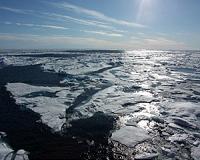 |
Washington DC (SPX) Aug 19, 2010 With the Central Pacific well within reach, SES WORLD SKIES has announced that The Nature Conservancy has secured capacity on its NSS-9 satellite to link researchers studying the Palmyra reef islands with the outside world. Located 1,000 miles south of Hawaii, remote Palmyra Atoll is a National Wildlife Refuge and part of the recently-designated Pacific Remote Islands Marine National Monument. Here, The Nature Conservancy manages the most natural marine laboratory in the world, where a consortium of scientists can study the islands, reefs, lagoons and miles of oceans surrounding Palmyra in relative comfort. Before connecting to the world via satellite technology, Palmyra was much more isolated. SES WORLD SKIES' satellite-delivered broadband enables world-renowned scientists from the Palmyra Atoll Research Consortium (PARC) to deliver their research findings directly from Palmyra via email and use the internet to access other research online, collaborate with colleagues, and stay in touch with family. PARC is a highly collaborative partnership of researchers, conservationists and universities conducting innovative research on everything from climate and atmospheric change, to sharks and manta rays, and coral reefs and lagoon hydrology. The Nature Conservancy is also tapping the NSS-9 satellite to link Palmyra to the National Oceanic and Atmospheric Adminsitration's (NOAA) worldwide tsunami alert system and to the Conservancy's offices in Hawaii. This connectivity increases safety, as well as connectivity. The 3-year agreement is a renewal of the original contract signed in 2006, when The Nature Conservancy and PARC scientists asked SES WORLD SKIES to provide reliable connectivity throughout one of the world's most isolated island systems. "Our satellite connection is the lifeblood of a vital international research operation in Palmyra," explained Rico Gomez, Director of Internal Affairs for The Nature Conservancy in Hawaii. "The value of the reach and reliability of the satellite connectivity is immeasurable considering the long-term impact many of the island discoveries may have on our conservation efforts worldwide," added Gomez. "SES WORLD SKIES' NSS-9 satellite and support team are playing a critical role in protecting island communities and exporting important new research from one of the most isolated locations in the world," said Andrew Ruszkowski, Vice President of North America Enterprise Services for SES WORLD SKIES. "The relationship between The Nature Conservancy and SES WORLD SKIES represents the importance of science and communications without geographical limits."
Share This Article With Planet Earth
Related Links SES WORLD SKIES Palmyra Atoll Research Consortium Earth Observation News - Suppiliers, Technology and Application
 Russia Proposes Launch Of Arktika Space Monitoring Project In 2014
Russia Proposes Launch Of Arktika Space Monitoring Project In 2014Moscow, Russia (RIA Novosti) Aug 17, 2010 The Russian Economic Development Ministry has proposed launching the Arktika (Arctic) satellite system from 2014, the head of the Federal Space Agency (Roscosmos) said on Monday. The system, which is worth around 70 billion rubles ($2.5 billion), will monitor climatic changes and survey energy resources in the Arctic region. "We developed a system that consists of three subsystems, and sub ... read more |
|
| The content herein, unless otherwise known to be public domain, are Copyright 1995-2010 - SpaceDaily. AFP and UPI Wire Stories are copyright Agence France-Presse and United Press International. ESA Portal Reports are copyright European Space Agency. All NASA sourced material is public domain. Additional copyrights may apply in whole or part to other bona fide parties. Advertising does not imply endorsement,agreement or approval of any opinions, statements or information provided by SpaceDaily on any Web page published or hosted by SpaceDaily. Privacy Statement |